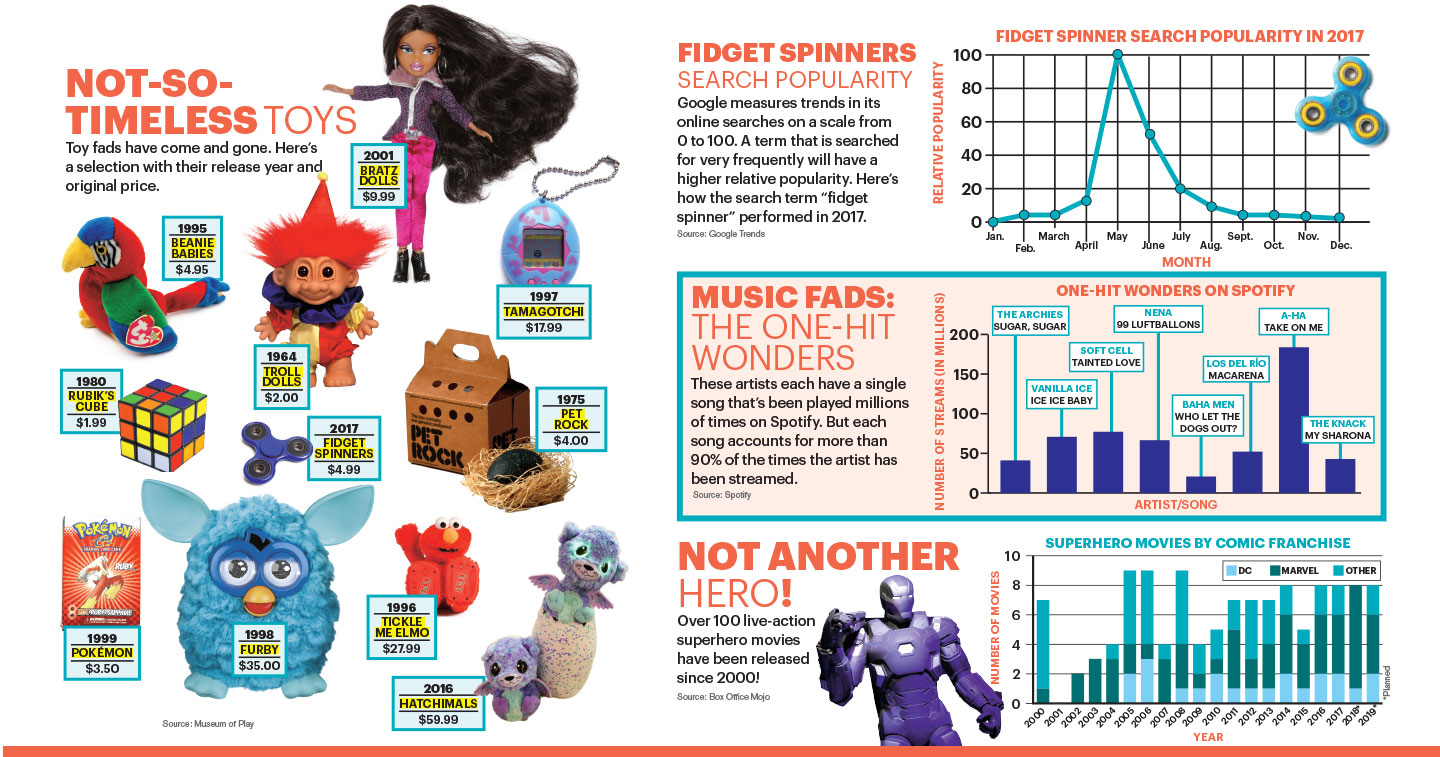A fad is an exaggerated interest in something that’s short-lived. The word itself dates back to the 1800s, but fads have been around for much longer. And toys aren’t the only things that have become fads. In 1637, a tulip craze swept the Netherlands—everyone had to have the flowers. Some even paid more than the cost of a house for a single flower bulb!
“Our desire for novelty fuels our appetite for fads,” says Margo Bergman, a fad researcher at the University of Washington. Toy fads usually last about 6 months to a year. They are often successful because they appeal to kids, who crave new experiences more than adults do. Kids also have less-developed decision-making capabilities, Bergman explains, making them more susceptible to impulse buys.
But the same biological mechanism behind toy fads applies to pretty much everything in popular culture. Boy bands in the 1990s, superhero movies in the 2010s, tulips in the 1600s—they are all driven by our desire for things that are new!


